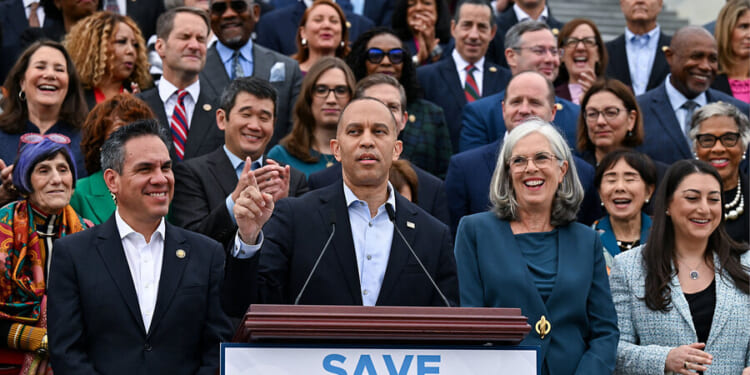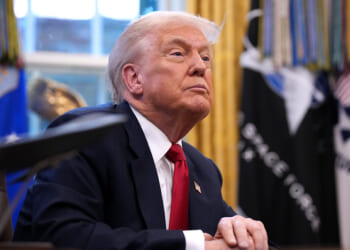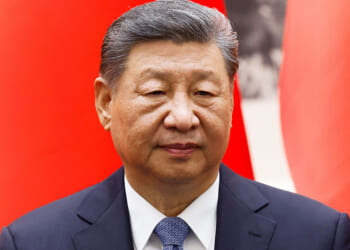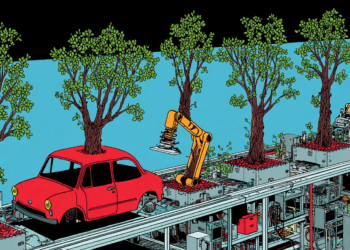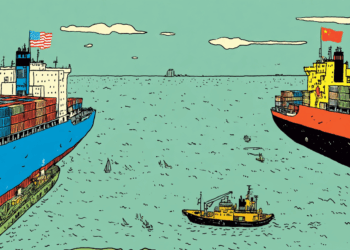With more than half a million federal workers now furloughed, President Donald Trump is pledging to make this government shutdown even more impactful – by enacting deep, permanent cuts to the federal workforce. But he’s already facing legal challenges and questions of whether he’s even allowed to fire workers during a shutdown.
“We can do things during the shutdown that are irreversible, that are bad for [Democrats] and irreversible by them, like cutting vast numbers of people out, cutting things that they like, cutting programs that they like,” President Trump said Tuesday, hours before the shutdown began. “They’re taking a risk by having a shutdown.”
The shutdown comes amid an already-massive reduction in the federal workforce by the Trump administration. The Office of Personnel Management estimates that more than 300,000 federal employees will be gone by the end of the year – roughly one-eighth of the total federal workforce, which sat at 2.4 million when Mr. Trump returned to the White House. That includes 100,000 workers who responded to the “fork in the road” offer and chose early retirement or deferred resignation. Most of those workers had remained on the government payroll while not actually working, with their employment officially ending Sept. 30, the end of the fiscal year.
Why We Wrote This
A partial government shutdown is underway amid partisan spending disputes. What’s different this time: President Donald Trump is pledging to further reduce the federal workforce. It would be the latest example of asserting expanded powers for the presidency.
In previous government shutdowns, wide swaths of federal workers have been put on furlough. But they’ve always come back to work as soon as Congress and the president agreed on a funding deal, and received back pay (mandated by law in 2019 after the last shutdown).
Government departments furloughing majorities of their employees this time include the Environmental Protection Agency, the Department of Labor, and what’s left of the Department of Education, nearly half of whose employees had already been laid off by the Trump administration earlier this year.
The EPA in particular could be targeted for further layoffs from the Trump administration.
The Office of Management and Budget (OMB) issued guidance to government agencies last week to plan for permanent layoffs in the case of a shutdown, while the Office of Personnel Management updated its shutdown guidance on Sunday to say agencies “are authorized to direct employees to perform work necessary to administer the RIF [reduction in force] process during the lapse in appropriations as excepted activities.”
The act of laying off employees requires administrative work by government officials who would normally be placed on furlough during a shutdown. The only people legally authorized to be exempted from furloughs are those whose work is deemed necessary to protect imminent threats to life or property or to support a fully funded government function.
The OMB’s view that the workers involved in firing employees can continue to do that job in a shutdown is novel – and legally untested. And it’s about to face court scrutiny.
On Tuesday afternoon, hours before the shutdown began, the American Federation of Government Employees; American Federation of State, County and Municipal Employees; and other unions sued the Trump administration to block any mass firings during the shutdown, arguing that they would be an illegal abuse of power.
“The Trump administration has made unlawful threats to dismantle essential federal services and functions provided by federal personnel, deviating from historic practice and violating applicable laws, if a shutdown occurs,” the lawsuit reads, arguing that effectuating layoffs is “plainly not a permitted (or ‘excepted’) function that can lawfully continue during a shutdown.”
Sam Berger, a former senior OMB official during the Obama administration who was involved in navigating the 2013 government shutdown, says the OMB hasn’t offered “any legal justification” for its argument that employees implementing layoffs can keep working during a shutdown.
“The shutdown itself does not give them the authority to engage in these widespread firings,” he says. “Their HR departments, in most cases, don’t have funding, and so they should not be able to work on RIFs during a shutdown.”
This appears to be the latest in a series of calculated efforts from OMB Director Russell Vought and the Trump administration to test long-assumed restrictions on executive power in an attempt to expand the power of the presidency.
“They are attempting to shape how executive branch power is used in the law, as opposed to a set of norms,” says a senior OMB official from Mr. Trump’s first term in office who spoke on background. “A lot of what this administration is doing is really pushing to get clarified in written law, particularly, what those bounds of executive power are.”
This official was involved in navigating furloughs the last time government funding lapsed, in late 2018 and early 2019. That 35-day shutdown, the longest in U.S. history, occurred because Mr. Trump was trying to force Democrats to give him funding for a wall along the U.S.-Mexico border.
The Trump administration’s goal then was to minimize the amount of disruption felt by the American public. But now, Democrats are the ones forcing the shutdown, to try to get Republicans to continue funding “Obamacare” subsidies so millions of people don’t see steep jumps in health care premiums. That means the shoe is on the other foot – and Mr. Trump is looking to exert maximal pressure.
“We’d be laying off a lot of people,” the president said Tuesday afternoon. “A lot of good can come from shutdowns. We get rid of a lot of things that we didn’t want. And they’d be Democrat things.”
Democrats responded that Mr. Trump had shown his true colors with that statement.
“Well, there it is. Trump admitted himself that he is using Americans as political pawns,” Senate Minority Leader Chuck Schumer said Tuesday afternoon in response to Mr. Trump’s layoff threats.
When asked if he were worried that the shutdown would lead to more layoffs, Mr. Schumer said, “He’s doing it anyway. They’ve already cut 300,000 people. … It will fall on him. He’s the one doing the firings, not Democrats.”
The courts will likely decide if they’re allowed to go through.

